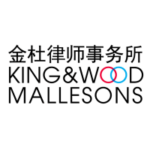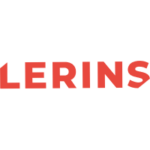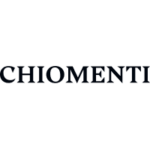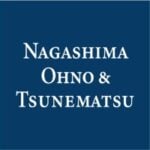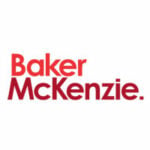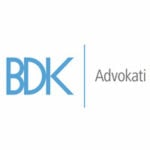-
Please briefly summarize your country's legislative framework for medicinal products (including biologicals), medical devices, food, and food supplements
The Food and Drug Administration (“FDA”) maintains authority over labelling for food, pharmaceutical products, medical devices, and cosmetics, and over advertising for prescription medications and certain categories of medical devices pursuant to the Federal Food, Drug, and Cosmetic Act, 21 U.S.C. § 301, et seq. (“FDCA”). FDA works with the Department of Justice (“DOJ”) to enforce these regulations in federal courts. The Federal Trade Commission (“FTC”) regulates advertising (other than labelling) for food, over-the-counter (“OTC”) products, cosmetics, and non-restricted medical devices under the Federal Trade Commission Act, which prohibits a variety of “unfair or deceptive acts or practices,” including the dissemination of false advertisements directed to consumers. See 15 U.S.C. §§ 45, 52, 55; 21 U.S.C. § 352(r). The Drug Enforcement Agency (“DEA”) regulates certain prescription medicines that have a potential for abuse pursuant to the Controlled Substances Act, 21 U.S.C. § 801, et seq. Depending on the product, state agencies may also administer certain labeling and licensing requirements.
The pre-emption doctrine protects product manufacturers from liability based on regulatory approval. For prescription medicines approved by FDA, a plaintiff’s state law claims that a manufacturer failed to warn of a particular adverse event are pre-empted if there is “clear evidence” that FDA would not have approved the warning that a plaintiff has proposed. Wyeth v. Levine, 555 U.S. 555 (2009). These claims may be pre-empted where plaintiffs cannot identify “newly acquired information” that would have allowed the product manufacturer to unilaterally update the product’s labelling without prior FDA approval. Gibbons v. Bristol-Myers Squibb Co., 919 F.3d 699, 707–08 (2d Cir. 2019); see also 21 C.F.R. § 314.70; 21 C.F.R. § 314.3. For medical devices governed by the Medical Device Amendments of 1976 (“MDA”), the MDA “expressly pre-empts only state requirements ‘different from, or in addition to, any requirement applicable . . . to the device’ under federal law.” Riegel v. Medtronic, 552 U.S. 312, 321 (2008). For OTC products, the FDCA preempts any state or local government requirement “that is different from or in addition to, or that is otherwise not identical with, a requirement under” the FDCA, in addition to the Fair Packaging and Labeling Act, 15 U.S.C. § 1451, et seq., or the Poison Prevention Packaging Act of 1970, 15 U.S.C. § 1471, et seq. For food products, the FDCA contains an express pre-emption provision providing that states must not have food labeling requirements that are not “identical” to those in the FDCA. See 21 U.S.C. § 343-1.
-
With regards to medicinal products and medical devices, how is the regulatory process structured in your jurisdiction from R&D through market approval until post-marketing vigilance, and what rules does it follow? Please briefly describe.
There are three main avenues through which to bring a medical device to market, determined by “the risk posed by a device,” which “can change classification systems depending on the results of scientific data.” See FDCA § 513; The Device Development Process, available at https://www.fda.gov/patients/learn-about-drug-and-device-approvals/device-development-process. Class I devices pose low risk, such as oxygen masks and handheld surgical instruments. Class III devices are those that “support or sustain life, are implanted in the body, or have the potential for unreasonable risk of illness or injury,” such as pacemakers. Id. Class II devices fall in between the other two classes. Regardless of the classification, the product lifecycle begins with preclinical research, during which prototypes are developed and studied to assess the product’s benefits and potential associated risks. Id.
To obtain FDA approval, there are different requirements based on the classification of the product. Class I and II are subject to pre-market notice – also referred to as 510(k) for the relevant code section – which requires that the manufacturer demonstrate the substantial equivalence of the new product to a legally marketed device. Substantial equivalence means that “that the device to be marketed is as safe, effective” as an already marketed product not subject to premarket approval.
Class III devices are subject to premarket approval (PMA), which requires a higher showing from the manufacturer. See, e.g., Buckman Co. v. Plaintiffs’ Legal Comm., 531 U.S. 341, 344-45 (2001). The PMA application must demonstrate “reasonable assurance” that the device is both “Safe…[and] effective under the conditions of use prescribed, recommended, or suggested in the proposed labeling thereof.” 21 U.S.C.S. § 360e(d)(2)(A), (B). To do so, the application must include: (1) all known reports pertaining to the device’s safety and efficacy; (2) a full statement of the components, ingredients, and properties and of the principles of operation of the device; (3) a full description of the methods used in, and the facilities and controls used for, the manufacture, processing of the device; (4) samples of the device; (5) the proposed labelling that will accompany the device. See id. at (B)-(F). FDA requires an average of 1,200 hours to review each PMA submission. Medtronic, Inc. v. Lohr, 518 U.S. 470, 477 (1996).
For all devices, FDA imposes certain controls or obligations that the manufacturer must comply with in the manufacture, marketing, and sale of the device. Additionally, FDA conducts routine inspections of manufacturing facilities across the United States. Finally, device manufacturers are required to report known adverse events to FDA, who monitors these reports to assess whether any change in approval conditions is required.
FDA promulgates the current good manufacturing practices (“CGMP”), which provides guidance on best practices for manufacturing of devices already on the market. In February 2024, FDA issued a final rule to harmonize the CGMP with the quality management system (“QMS”) requirements used by regulatory authorities in other countries. The goal of this final rule is to increase consistency between FDA regulations of devices and similar regulations in these other countries. This rule is set to take effect on February 2, 2026.
-
What is the regulatory process for food supplements, from first notification to the competent authorities until post-marketing vigilance in your country, and what regulations are applicable here? Please briefly describe.
“Dietary supplements are regulated by FDA as food, not as drugs.” Dietary Supplements, available at https://www.fda.gov/consumers/consumer-updates/dietary-supplements#:~:text=Dietary%20supplements%20are%20regulated%20by,as%20food%2C%20not%20as%20drugs. Under the Dietary Supplement Health and Education Act (DSHEA), passed in 1994, FDA has authority to regulate dietary supplements. If a dietary supplement is found to be adulterated or misbranded, FDA can remove such a product from the marketplace or take other action to rectify the misbranding.
Additionally, FTC regulated dietary supplement advertising by enforcing truth-in-advertising laws. Dietary supplements cannot be advertised as treating, preventing, or curing any disease or health condition. Additionally, the product label must contain a truthful listing of the dietary supplement’s ingredients and a recommended serving size.
-
What are the ongoing obligations in your country after a marketing authorization for medicinal products has been obtained or a conformity assessment been carried out for medical devices?
Life sciences companies may have a duty to disclose adverse event reports to FDA through a public reporting database known as the Manufacturer and User Facility Device Experience (“MAUDE”), which are publicly available.
Medical device manufacturers are required to report, “within 30 calendar days after the day [they] receive or otherwise become aware of information, from any source, that reasonably suggests that a device” caused or contributed to serious injury or death, or a device malfunction that could cause serious injury or death if it were to recur. 21 C.F.R. 803.50. These reports must include, inter alia, patient information (name, age, gender, weight), the nature of the adverse event, the outcome attributed to the adverse event, and all actions taken to investigate the adverse event. 21 C.F.R. 803.52.
An importer of a medical device must report adverse events leading to death or serious injury to FDA and the device manufacturer within 30 days. 21 C.F.R. 803.40. Additionally, they must report device malfunctions, even those not involving death or serious injury, to the device manufacturer.
User facilities, defined as a “hospital, ambulatory surgical facility, nursing home, outpatient diagnostic facility, or outpatient treatment facility…which is not a physician’s office,” also have reporting obligations. 21 C.F.R. 803.3. They must report instances where the information “reasonably suggests that a device has or may have caused or contributed to” death or serious injury. 21 C.F.R. 803.30. These reports must be made to FDA, the manufacturer, or both, within 10 days of the user facility becoming aware of the information.
-
Which are the competent national authorities having the regulatory oversight over medicinal products, medical devices, food, and food supplements and what are their respective responsibilities?
FDA has broad authority to regulate pharmaceuticals, medical devices, and food. This authority relates to the design and manufacturing of these products. It also covers promotion and marketing that is not direct to consumer
FTC has authority to regulate direct to consumer advertising. FTC is tasked with regulating and enforcing requirements that prohibit unfair or deceptive acts or practices in or affecting commerce as well a false advertisement. See Response to Question 1 for a more thorough description.
-
Please briefly describe the procedure of challenging regulatory decisions (e.g., denial of marketing authorization) made by the competent regulatory authority in relation to medicinal products, medical devices, and food supplements.
Since FDA is a federal agency, the principles of administrative law and the Administrative Procedure Act govern challenges to regulatory decisions. For medical devices, there is a requirement that the agency action be a “significant decision” to be entitled to an FDA supervisory appeal. 21 C.F.R. 800.75. Such actions include decision on 510(k) substantial equivalent, PMA approvals, Breakthrough Device Designation Requests, IDE.
Upon exhaustion of agency appeals, one can file a lawsuit in court to challenge the agency’s actions. Those adversely affected or aggrieved by agency action within the meaning of a relevant statute or those who experience a legal wrong because of agency action, have standing to challenge the agency action in court. Courts will apply the arbitrary and capricious standard.
This standard “requires that agency action be reasonable and reasonably explained. Judicial review under this standard is deferential, and a court may not substitute its own policy judgment for that of the agency.” FCC v. Prometheus Radio Project, 141 S. Ct. 1150, 1158 (2021). Therefore, courts will uphold agency actions unless it is demonstrated that the agency acted unreasonably or has failed to satisfactorily explain the basis for its decision.
In June 2024, the Supreme Court issued a ruling that may curtail agency authority. Loper Bright Enterprises, et al. v. Raimondo, 603 US __ (2024). However, this decision applies to a court’s review of any ambiguity in a Congressional act delegating power to a federal agency. Agencies are still granted deference when they are acting within the scope of the delegated authority or where the enabling act is not ambiguous.
-
Please briefly describe the legal framework and the relevant regulatory procedure (e.g., application process, requirements, approval, denial) that applies in your jurisdiction to clinical trials for medicinal products and medical devices.
FDA provides regulatory guidance over clinical trials and compassionate use programs. See 21 C.F.R. § 50, FDA, Regulations: Good Clinical Practice and Clinical Trials (Aug. 28, 2019), available at https://www.fda.gov/science-research/clinical-trials-and-human-subject-protection/regulations-good-clinical-practice-and-clinical-trials. All clinical trials conducted in connection with securing FDA approval to market must adhere to the requirements of 21 C.F.R. Parts 50 and 56. Part 50 addresses the need to secure informed consent from human subjects who participate in clinical trials. Part 56 addresses the need to secure review of clinical investigation by the Institutional Review Board (“IRB”), which is tasked with approving and monitoring the clinical trial process. Waiver of the IRB review requirement may be obtained pursuant to 21 C.F.R. 56.105 upon application by the sponsor to FDA.
An initial new drug application (IND”) may apply to one or more of the clinical phases and must detail the design of the clinical investigation and the investigators who will be conducting the trials, in addition to how the data will be gathered, maintained, and analyzed. 21 C.F.R. Part 312. An investigational device exception (“IDE”) is required for devices that may not be introduced in the market by filing a 510(k) or pre-market notice, but instead require a PMA. 21 C.F.R. Part 812.
-
Is there a public database for clinical trials in your country, and what are the rules for publication?
The National Center for Biotechnology Information, a division of the National Institute of Health, maintains ClinicalTrials.gov. This database covers most clinical trials in the United States and includes studies in all 50 states and over 200 countries.
Two categories of device clinical trials must be registered. First, if the “study is a pediatric postmarket surveillance of a device product.” 42 C.F.R. §11.22(b). Second, the trial must be registered if it is an interventional study with a primary purpose other than feasibility and any of the following apply: (1) at least one facility where the trial is being conducted is within the United States; (2) the device being investigated is manufactured in and exported from the United States for study in another country; or (3) the clinical trial has an investigational device exemption number. Id.
A clinical pharmaceutical trial must be registered if it is interventional, is not a phase 1 study, is studying an FDA regulated pharmaceutical product; and any of the following apply: (1) at least one facility where the trial is being conducted is within the United States; (2) the pharmaceutical being investigated is manufactured in and exported from the United States for study in another country; or (3) the clinical trial has an IND number. Id.
Even if not required to be listed on ClinicalTrials.gov, the study sponsors can choose to have their clinical trials registered, nonetheless.
-
Please briefly summarize the rules that must be observed in your jurisdiction when using data from clinical trials?
Clinical trials necessarily require the collection of Personal Health Information (“PHI”), which triggers certain requirements under the Health Insurance Portability and Accountability Act of 1996 (“HIPAA”). In addition to the federal requirements under HIPPA, many states have enacted laws to help protect clinical trial subjects’ personal data, which impose obligations similar to those under GDPR, such as notice, data privacy rights, and security measures. Yet, there are carve-outs in certain state laws that make them inapplicable to research activities such as clinical trials.
At the federal level, HIPAA only applies to “covered entities,” which include health insurers, healthcare providers, and their business associates. Since clinical trials sponsors typically fall outside of the definition of “covered entities,” i.e. pharmaceutical companies, HIPAA is not applicable, and the trial sponsors must ensure that they do not assume the obligation to comply with HIPAA by contracting with a covered entity. Given that HIPAA generally does not apply, trial sponsors often place assurances and obligations in the informed consent forms that trial participants sign.
Also applicable is the Health Information Technology for Economic and clinical Health Act (“HITECH”). HITECH was passed in 2009 to incentivize the adoption of electronic medical records. Contained in the act were provisions permitting the enforcement of HIPAA’s data privacy rules in addition to an obligation to notify patients of any date breach or unauthorized disclosure of their personal data. Companies found to be in “willful neglect” of the requirements under HIPAA and HITECH can be fined up to $250,000 for a first offense and $1.5 million for each subsequent incident.
California’s data privacy law serves as a good example of how state laws exempt clinical trial data from their purview. Cali. Civil Code §1798.100. While the law works to safeguard Californians personal data, it does not apply to “information collected as part of a clinical trial subject to the Federal Policy for the Protection of Human subjects.” Id.
-
Are there any trends and/or legislative proposals in your country on digitizing the process of conducting clinical trials (e.g., digitalization of the application process, decentralization of clinical trials)?
FDA maintains authority over labelling for food, pharmaceutical products, medical devices, and cosmetics, and over advertising for prescription medications and certain categories of medical devices pursuant to the FDCA. FDA has recognized the importance of leveraging technology to enhance the conduct of clinical trials. Section 745A(a) of the FDCA [added by section 1136 of the Food and Drug Administration Safety and Innovation Act (FDASIA) (Public Law 112-144)], requires that submissions under section 505(b), (i), or (j) of the FDCA and submissions under section 351(a) or (k) of the Public Health Service Act (PHS Act) be submitted in electronic format specified by FDA beginning no earlier than 24 months after FDA issues a final guidance specifying an electronic submission format. To comply with section 745(A)(a), regulatory documents must be submitted electronically at least 24 months after FDA issues a final guidance document. See id.; see also 21 C.F.R. § 11; https://www.fda.gov/regulatory-information/search-fda-guidance-documents/part-11-electronic-records-electronic-signatures-scope-and-application#ret2.
Informing FDA’s trend towards digitization of clinical trials is the September 2013 guidance, “Electronic Source Data in Clinical Investigations”, which was intended to streamline and modernize clinical investigation by addressing source data in clinical investigations used to fill the predefined fields in an electronic case report form (eCRF). This FDA industry guidance promotes capturing source data in electronic form, and is intended to assist in ensuring the reliability, quality, integrity, and traceability of data from electronic source to electronic regulatory submission, and is available at https://www.fda.gov/regulatory-information/search-fda-guidance-documents/electronic-source-data-clinical-investigations.
For Investigational New Drug (IND) application, FDA has implemented the Electronic Common Technical Document (eCTD) format, which provides for the electronic submission of regulatory information. In February 2020, FDA issued relevant guidance on eCTD, “Providing Regulatory Submissions in Electronic Format — Certain Human Pharmaceutical Product Applications and Related Submissions Using the eCTD Specifications Guidance for Industry”, available at https://www.fda.gov/regulatory-information/search-fda-guidance-documents/providing-regulatory-submissions-electronic-format-certain-human-pharmaceutical-product-applications. The eCTD format is also commonly used for New Drug Applications (NDAs). In April 2024, FDA issued relevant guidelines on regulatory submissions, “Providing Regulatory Submissions in Electronic Format: IND Safety Reports”, available at https://www.fda.gov/regulatory-information/search-fda-guidance-documents/providing-regulatory-submissions-electronic-format-ind-safety-reports-guidance-industry. This document provides guidelines for the electronic format that sponsors should use when submitting IND safety reports for suspected adverse reactions.
FDA has recognized that technological advances can now facilitate remote vs. in-person vs. hybrid participation in decentralized clinical trials (DCTs), in which some or all trial-related activities occur at locations other than traditional clinical trial sites. In May 2023, FDA issued a relevant guidance document of recommendations for DCTs, “Decentralized Clinical Trials for Drugs, Biological Products, and Devices”, available at https://www.fda.gov/regulatory-information/search-fda-guidance-documents/decentralized-clinical-trials-drugs-biological-products-and-devices.
In December 2023, FDA issued additional guidance with recommendations on the use of digital health technologies (DHTs) to acquire data remotely from participants in clinical investigations that evaluate medical products, “Digital Health Technologies for Remote Data Acquisition in Clinical Investigations”, available at https://www.fda.gov/regulatory-information/search-fda-guidance-documents/digital-health-technologies-remote-data-acquisition-clinical-investigations. The guidance emphasized reliability, privacy, quality, and safety as clinical trials tend to become more decentralized, flexible, accessible, and technology reliant.
-
What are your country's legal requirements for the authorization of manufacturing plants for medicinal products, medical devices, food, and food supplements? Please briefly describe.
There are licensing and registration requirements for facilities manufacturing medicinal products, medical devices, food, and food supplements. See, e.g., 21 U.S.C. §§ 350(d), 360; 21 C.F.R. §§ 1(H), et seq. In addition, state business license requirements, which may require proof of registration of a prescription medicine with FDA, certain corporate documentation, a self-inspection report and more, may also apply depending on the state(s) involved.
To ensure the safety, quality, and efficacy of medicinal products, FDA enforces Current Good Manufacturing Practice (CGMP) regulations for pharmaceutical manufacturing plants, including in the Current Good Manufacturing Practice in Manufacturing Processing, Packing, or Holding of Drugs, available at https://www.fda.gov/drugs/pharmaceutical-quality-resources/current-good-manufacturing-practice-cgmp-regulations. For CGMP relating to food supplement, see also https://www.fda.gov/regulatory-information/search-fda-guidance-documents/small-entity-compliance-guide-current-good-manufacturing-practice-manufacturing-packaging-labeling#VII. The CGMP’s detailed requirements address various aspects of manufacturing medicinal products, including facility design, equipment, personnel, production processes, packaging and labeling control, and documentation required for certification. FDA provides similar guidance documents to address specific manufacturing requirements relating to medical devices and food, accessible via https://www.fda.gov/inspections-compliance-enforcement-and-criminal-investigations/compliance-manuals/manual-compliance-policy-guides.
In December 2024, FDA released its final guidance on the “Advanced Manufacturing Technologies Designation Program”, which encourages the early adoption of advanced manufacturing technologies (AMTs) that have the potential to benefit patients by improving manufacturing and supply dependability and optimizing development time of pharmaceutical and biological products. https://www.fda.gov/regulatory-information/search-fda-guidance-documents/advanced-manufacturing-technologies-designation-program.
-
Please briefly describe the typical process of distributing medicinal products, medical devices, and food supplements in your country, encompassing, if applicable, the wholesale distribution of products.
Medicinal products involve multiple and overlapping phases of distribution, starting with manufacturing in compliance with FDA’s CGMPI available at https://www.fda.gov/drugs/pharmaceutical-quality-resources/current-good-manufacturing-practice-cgmp-regulations (see No. 11), including quality assurance testing of the facility and quality control and product testing of raw materials, in-process samples, and finished products. Medicinal products must be labeled with essential ingredient, dosage, instruction, and warning information in accordance with FDA regulations, and be packaged to ensure the integrity of the product during distribution. During transportation, temperature-sensitive products may require specialized handling to prevent degradation in the stability or quality of the product.
While FDA-regulated products may pass through distribution centers and wholesalers before reaching retail outlets or end-users, entities in the distribution chain must adhere to the Drug Supply Chain Security Act (DSCSA) throughout the distribution process. See 21 U.S.C. § 301, et seq.
Section 202 of the DSCSA added section 582 to FDCA, which established product tracing, product identifier, authorized trading partner, and verification requirements for manufacturers, re-packagers, wholesale distributors, and dispensers to facilitate the tracing of products through the pharmaceutical distribution supply chain. Under the DSCSA, additional verification requirements apply to wholesale distributors, including relating to saleable returned pharmaceutical products. See also 21 U.S.C. §§ 503(e), 503(e)(2)(A), 584(b).
In the event of a product recall or safety concern, FDA has established procedures for the manufacturer to ensure the prompt removal of affected products in the distribution chain, including https://www.fda.gov/regulatory-information/search-fda-guidance-documents/wholesale-distributor-verification-requirement-saleable-returned-drug-product-and-dispenser-0 and the industry guidance entitled “Enhanced Drug Distribution Security at the Package Level Under the Drug Supply Chain Security Act” (DSCSA) available at https://www.fda.gov/regulatory-information/search-fda-guidance-documents/enhanced-drug-distribution-security-package-level-under-drug-supply-chain-security-act.
-
Please briefly describe the pricing and reimbursement rules, if any, for medicinal products, medical devices, and food supplements in your jurisdiction?
The Inflation Reduction Act (IRA) of 2022 aims to negotiate prices of certain high-spend medicinal products for Medicare (prescription benefit for people over 65). Following passage of the IRA (P.L. 117-169), the Centers for Medicare & Medicaid Services (CMS) issued revised guidance on the requirements and procedures for calculating rebates and invoicing manufacturers for reimbursements owed under the Medicare Prescription Drug Inflation Rebate Program for certain products covered under Medicare Part B and Part D. The law requires pharmaceutical companies to pay a rebate to Medicare if they raise their prices for certain products faster than the rate of inflation. Though the IRA has no direct impact on medications paid for by private insurance, it may lead to lowering of medicinal products that are sold in the private market as well. As of January 2025, two rounds of negotiations have identified 10 and 15 medicinal products that will be regulated under the IRA.
Under the Medicaid Drug Rebate Program, manufacturers of medicinal products and medical devices are required to report the “best price” offered to certain purchases, including Medicaid. The program requires a product manufacturer to enter into, and have in effect, a National Drug Rebate Agreement (NDRA) with the Secretary of the Department of Health and Human Services (HHS) in exchange for state Medicaid coverage of most of the manufacturer’s products. When a manufacturer markets a new covered outpatient drug (COD), it must also submit product and pricing data concerning the product to CMS via the Medicaid Drug Programs (MDP) system.
-
What legislative framework applies to the advertising for medicinal products, medical devices, and food supplements in your country?
FDA regulates the advertising and promotion of prescription medicines, including that labelling must provide adequate directions for use and must not be false or misleading, including by material omissions. See 21 U.S.C. § 352(a)(1), (f)(1),(n); see also 21 U.S.C. § 321(n). The applicable regulations impose requirements on patient/consumer-facing prescription medication labelling and advertising, which must be a “true statement of information in brief summary relating to the side effects, contraindications, and effectiveness” of the product, and must present a “fair balance” between safety and effectiveness information. See 21 C.F.R. § 202.1; see also 21 C.F.R. § 202.1(e)(5)-(7).
In addition, FDA has issued guidance documents outlining procedures of voluntary review for direct-to-consumer television advertisements of medicinal products, medical devices, and food supplements, as well as guidance on recommendations for correcting misinformation about medicinal products and medical devices on the internet and social media platforms. See, e.g., https://www.fda.gov/regulatory-information/search-fda-guidance-documents/internetsocial-media-platforms-correcting-independent-third-party-misinformation-about-prescription and https://www.fda.gov/regulatory-information/search-fda-guidance-documents/direct-consumer-prescription-drug-advertisements-presentation-major-statement-clear-conspicuous. FDA has also provided guidance that addresses questions regarding the development of FDA-regulated promotional labelling and advertisements for prescription reference products and prescription biosimilar products at https://www.fda.gov/regulatory-information/search-fda-guidance-documents/promotional-labeling-and-advertising-considerations-prescription-biological-reference-and-biosimilar.
Dietary supplements (food supplements) are defined as, in part, a product that is ingested by mouth to supplement the diet and contains one or more of the following ingredients: a vitamin; a mineral; an herb or other botanical; an amino acid; a dietary substance for use by man to supplement the diet by increasing the total dietary intake; or a concentrate, a metabolite, a constituent, an extract, or any combination of the foregoing ingredients. 21 U.S.C. § 321. Under the 1994 Dietary Supplement Health and Education Act (DSHEA) amending the FDCA, manufacturers are not required to submit dietary supplements to FDA for safety testing or approval prior to sale. In April 2024, FDA issued draft guidance on recommendations about Master Files (files containing identity, manufacturing, and/or safety information relating to a new dietary ingredient) for reporting new dietary supplements, accessible via https://www.fda.gov/regulatory-information/search-fda-guidance-documents/draft-guidance-industry-new-dietary-ingredient-notification-master-files-dietary-supplements.
FDA still regulates food supplements labelling, however, including mandating the placement and content of labels on advertised food supplements to state the: (1) identity (or the name of the food supplement); (2) net quantity of contents; (3) nutrition labeling; (4) ingredient list, and; (5) the name and place of business of the manufacturer, packer, or distributor. See 21 C.F.R. §§ 101.3(a), 101.105(a), 101.36, 101.4(a)(1), and 101.5. See also https://www.fda.gov/food/dietary-supplements-guidance-documents-regulatory-information/dietary-supplement-labeling-guide-chapter-i-general-dietary-supplement-labeling#:~:text=Five%20statements%20are%20required%3A%201,manufacturer%2C%20packer%2C%20or%20distributor. Furthermore, manufacturers must have substantiation for any structure/function claims describing the role of a dietary supplement in the structure and function of human bodies while refraining from explicitly or implicitly claiming to prevent, treat, mitigate, cure, or diagnose a disease. See 21 U.S.C. § 343(r)(6); 21 C.F.R. § 101.93(f)-(g); FDA, Structure/Function Claims, Small Entity Compliance Guide available at https://www.fda.gov/regulatory-information/search-fda-guidance-documents/small-entity-compliance-guide-structurefunction-claims.
The Federal Trade Commission (“FTC”) also regulates advertising (other than labelling regulated by FDA) for food, food supplements, over-the-counter products, including that warnings be conveyed to consumers on product labels and labelling. See 21 C.F.R. § 201; 21 C.F.R. § 801. While the advertising of food and food supplements face fewer restrictions under the FTC, claims in advertising for these products must be true and cannot be misleading or unfair. Pursuant to the Federal Trade Commission Act, the FTC regulates a variety of “unfair or deceptive acts or practices,” including the dissemination of false advertisements directed to consumers. See 15 U.S.C. §§ 45, 52, 55; 21 U.S.C. § 352(r).
Additionally, the Lanham Act creates liability for any person who, on or in connection with any goods or services, makes a false or misleading statement that, inter alia, “in commercial advertising or promotion, misrepresents the nature, characteristics, qualities, or geographic origin of his or her or another person’s goods, services, or commercial activities.” 15 U.S.C. §1125(A)(1)(B). State laws may further regulate deceptive practices by providing consumers a basis to bring their own lawsuit against advertisers, including class action lawsuits, See, e.g., Cal. Bus. & Prof. Code §§ 17200, 17500.
-
What laws apply to patents and trademarks for medicinal products, medical devices, and food supplements in your country?
Patents and trademarks relating to medicinal products, medical devices, and food supplements are regulated by the United States Patent and Trademark Office (USPTO). Trademarks are governed by the USPTO under authority of the Lanham Act, 15 U.S.C. §§ 1051, et seq., while patent eligibility is governed by the Patent Act, 35 U.S.C. §§ 101, et seq. Utility patents protect useful, novel (35 U.S.C. §§ 102), and non-obvious (35 U.S.C. §§ 103) inventions for processes, machines, manufactured goods, compositions of matter, and improvements thereof. Under the Patent Act, the inventors (or assignee) has exclusivity rights for any article, process, or method covered by the patent claim. In addition, FDA publishes the Approved Drug Products with Therapeutic Equivalence Evaluations—commonly known as the Orange Book—that includes information on patents associated with products and their relevant expiration dates, accessible via https://www.fda.gov/drugs/drug-approvals-and-databases/approved-drug-products-therapeutic-equivalence-evaluations-orange-book.
Unlike term exclusivity for patents, trademark rights are indefinite so long as the mark remains used in commerce and the mark owner complies with statutory and regulatory requirements. Trademarks under the federal Lanham Act protect distinct words, symbols, logos, colors, slogans, sounds, package and store designs that are used in commerce to signify the source of a particular good or service to a relevant consumer in the marketplace. In addition to statutory trademark rights registered and regulated by the USPTO, common law trademark rights may accrue by virtue of use in commerce in connection with a particular good or service, but only in the geographic area(s) of use in commerce.
Registering a trademark with the USPTO provides a rebuttable presumption that the registrant is the valid owner of the protectable trademark with exclusive use rights. Violations of such rights can include significant statutory damages under the federal Lanham Act. Issues relating to trademark applications and/or registrations filed with the USPTO may be adjudicated by the Trademark Trial and Appeal Board (TTAB) in two types of hearings: (1) an ex parte appeal from denial of your application for registration by an examining attorney; and (2) an inter partes opposition, cancellation, concurrent use or interference proceeding.
-
Please briefly describe how patent infringements in relation to medicinal products and medical devices are addressed in your jurisdiction, including possible defense strategies and legal proceedings against patent infringements.
Infringement and invalidity contentions are usually governed by Local Rule or Standing Order (or the Case Management Plan), and may require accompanying document productions relating to prosecution histories, prior art, and ownership records. Infringement analysis typically requires two separate steps: claim construction and comparison of the accused product to the claims. See, e.g., Terlep v. Brinkmann Corp., 418 F.3d 1379, 1381 (Fed. Cir. 2005). In the first step, the court construes the claims as a matter of law to establish their meaning and scope. See, e.g., Markman v. Westview Instr., Inc., 52 F.3d 967, 979 (Fed. Cir. 1995) (en banc), aff’d, 517 U.S. 370 (1996). Claim construction is determined at Markman hearings – named after Markman v. Westview Instruments, Inc., 517 U.S. 370 (1996) wherein the Supreme Court held that judges, not juries, are responsible for determine the meaning of the words in patent claims. In determining the meaning of a claim term, several sources may be consulted, including “‘the words of the claims themselves, the remainder of the specification, the prosecution history, and extrinsic evidence concerning relevant scientific principles, the meaning of technical terms, and the state of the art.’” Phillips, 415 F.3d at 1314 (citations omitted). In the second step, the trier of fact determines whether the claims as thus construed read on the accused product, or if the accused product has a substantial equivalent element for each claim element not literally met. See, e.g., Cook Biotech Inc. v. Acell, Inc., 460 F.3d 1365, 1373 (Fed. Cir. 2006).
A patent enjoys a statutory presumption of validity. See 35 U.S.C. § 282. Similarly, each claim is individually presumed to be valid. As a result, any attempt to invalidate a patent claim must rest on clear and convincing evidence of invalidity. Questions of validity cannot normally be determined as part of the claim construction process, as they turn on the scope of the claim, and no such regime is endorsed. See, Phillips v. AWH Corp., 415 F.3d 1327 (Fed. Cir. 2005) (en banc). A claim may be invalid it is anticipated under 35 U.S.C. § 102, is only an obvious change over the prior art, judged from the viewpoint of a person of ordinary skill in that art under 35 U.S.C. §103, or is indefinite, vague, otherwise improper if it does not comply with the enablement, written description, and best mode requirements under 35 U.S.C. § 112
In 2023, the U.S. Supreme Court issued an opinion addressing the enablement requirement under 35 U.S.C. § 112(a) in Amgen Inc. v. Sanofi (2023) 1598 U.S. 594. The Supreme Court held: “If a patent claims an entire class of processes, machines, manufactures, or compositions of matter, the patent’s specification must enable a person skilled in the art to make and use the entire class. In other words, the specification must enable the full scope of the invention as defined by its claims. The more one claims, the more one must enable.” Id. at 610. This holding may impact the validity of certain patents in legal proceedings, particularly relating to antibodies and other biologics.
-
Does your jurisdiction provide for restrictions on the use of trademarks for medicinal products, medical devices, food, and food supplements?
Although FDA’s labeling requirements for medicinal products, medical devices, foods, and food supplements may further restrict the use of marks on regulated goods and products, in the United States, “a mark tells the public who is responsible for a product.” Jack Daniel’s Properties, Inc. v. VIP Prod. LLC (2023) 599 U.S. 140, 146. Marks must be used in commerce and distinctive to be eligible for trademark protection under the federal Lanham Act. In evaluating trademark protection eligibility, the distinctiveness of a trademark is generally as: (1) arbitrary/fanciful, (2) suggestive, (3) descriptive, or (4) generic. Inwood Laboratories, Inc. v. Ives Laboratories, Inc. (1982) 456 U.S. 844, 863. If a mark is categorized as either arbitrary/fanciful or suggestive, it is considered inherently distinctive, and exclusivity rights are determined by priority of use in commerce. A trademark that is categorized as descriptive may still be protectable as a trademark if it has acquired a secondary meaning to relevant consumers in the marketplace. Trademark classes categorize goods and services into different groups. Medicinal products (pharmaceutical), medical and veterinary supplies, dietary supplements, and sanitary preparations are included in trademark class 5.
Generic terms are ineligible for protection because they refer to a general class of products rather than indicating a unique source. “A generic term is one that refers, or has come to be understood as referring, to the genus of which the particular product is a species.” Abercrombie & Fitch Co. v. Hunting World, Inc. (2d Cir. 1976) 537 F.2d 4, 9. When a suggestive or fanciful term has become generic as a result of a manufacturer’s own advertising efforts, trademark protection will be denied save for those markets where the term still has not become generic and a secondary meaning has been shown to continue. Id., at 10, citing Bayer Co. v. United Drug Co. (2d Cir. 1921) 272 F. 505; DuPont Cellophane Co. v. Waxed Products Co. (2d Cir. 1936) 85 F.2d 75, cert. denied, 299 U.S. 601.
Relating to the distinctiveness element for trade dress protection under the federal Lanham Act is the functionality doctrine, which provides that functional features of a product cannot serve as a trademark. “In general terms, a product feature is functional,” and cannot serve as a trademark, “if it is essential to the use or purpose of the article or if it affects the cost or quality of the article,” that is, if exclusive use of the feature would put competitors at a significant non-reputation-related disadvantage. Inwood Laboratories, Inc. v. Ives Laboratories, Inc. (1982) 456 U.S. 844, 850, n. 10.
-
Please briefly describe the product liability regime for medicinal products, medical devices, and food supplements in your country.
Medicinal products, medical devices, and food supplements are all subject to regulation by FDA, with food supplements being regulated as foods not pharmaceuticals. The product liability regime in the United States is based on compensation for alleged defects in the products. An injury on the plaintiff is usually a requirement because based on the Economic Loss Rule, “a plaintiff is barred from recovering in tort when the claimed damages are solely grounded on economic loss” KeraLink Int’l, Inc. v. Geri-Care Pharms. Corp., 60 F.4th 175, 184 (4th Cir. 2023). Medical devices are regulated differently depending on perceived risk—Class I, Class II, and Class III.
Plaintiffs who allege product liability claims do so under theories of negligence or strict liability. Under theories of Negligence, consumers usually need to how: (1) “the manufacturer owed plaintiff a duty to exercise reasonable care”; (2) the manufacturer breached “that duty by fail[ing] to use reasonable care so that a product is rendered defective, i.e. reasonably certain to be dangerous”; (3) “the defect was the proximate cause of the plaintiff’s injury”; and (4) the plaintiff sustained “loss or damage.” Colon v. BIC USA, Inc., 199 F. Supp. 2d 53, 82 (S.D.N.Y. 2001). Food and dietary supplements are considered defective if these are contaminated. Dietary supplements can also be considered adulterated, which means that it “bears or contains any poisonous or deleterious substance which may render it injurious to health.” 21 U.S.C. § 342(a). Consumers usually seek compensatory and punitive damages for their injury.
-
Please provide a short overview of risks of liability (criminal liability, serious administrative / civil liability) and enforcement practice with regards to medicinal products (including biologicals), medical devices, foods, and food supplements.
The risk of liability most commonly seen is civil liability. There is no uniform substantive federal law that governs product liability claims across the United States; rather, each state has its own substantive law that will be applied. While there is no substantive federal law, manufacturers are able to preempt certain claims brought by plaintiffs by asserting, inter alia, compliance with government requirements or that plaintiffs are attempting to impose obligations different that those imposed by FDA.
There is also a trend wherein state Attorneys General seek civil penalties from product manufacturers under consumer protection theories of liability. Typically, individual plaintiffs will bring product liability causes of action first. Then, once those cases are litigated, certain attorneys general will seek to recover certain damages alleging that they are vindicating the rights of their citizens.
-
Does your jurisdiction provide for a specific legislative and regulatory framework for digital health applications (e.g., medical apps)? If yes, please briefly describe the relevant framework.
Software as a Medical device is currently regulated by FDA. It covers “software intended to be used for one or more medical purposes that perform these purposes without being part of a hardware medical device.” Similarly, FDA has released a guide on the regulation of Mobile Medical Applications, which it considers to be medical devices in certain scenarios. See Policy for Device Software Functions and Mobile Medical Applications Guidance. FDA focuses on the intended use of the mobile application, and it covers applications that are used “for the diagnosis of disease or other conditions, or the cure, mitigation, treatment, or prevention of disease, or is intended to affect the structure or any function of the body . . . ,” falling under section 201(h) of the FD&C Act.
For applications and software that pose minimal risk to consumers, like functions providing periodic educational or motivation information to patients, FDA will exercise enforcement discretion and not expect these manufactures to submit pre-market applications. In contrast, applications and software that pose a risk to a patient’s safety if they were to malfunction are the focus of FDA’s regulatory oversight. These include applications that use a mobile device’s features (e.g., camera, vibration function, flashlight, etc.), like ones that use mathematical algorithms to provide assessments of the risk of lesion on a patient. These applications and software are considered medical devices and regulated as such.
-
Does your jurisdiction provide for laws or certain legal measures to ensure the supply of medicinal products and medical devices, or are such rules envisaged in the future? If yes, please briefly describe those rules.
FDA issued guidance for manufactures to provide FDA with notice regarding permanent discontinuance or interruption of certain medical devices. See Notifying FDA of a Permanent Discontinuance or Interruption in Manufacturing of a Device Under Section 506J of the FD&C Act. The guidance mentions devices that are critical to public health during a Public Health Emergency, including devices that are life supporting or meant to use in emergency medical care. FDA maintains a list of these reports, known as the shortage list. Section 506J requires a notification of discontinuance or interruption in the supply of a product six months in advance of such event. The Resilient Supply Chain Program (RSCP) manages FDA’s activities anticipating and preventing the disruptions to the medical device supply chain, including maintaining the shortage list. See https://www.fda.gov/medical-devices/medical-device-supply-chain-and-shortages/506j-device-list.
The guidance only applies “during, or in advance of, a public health emergency declared by the Secretary under section 319 of the Public Health Service Act.” Id. With the Covid-19 public emergency expiring on May 11, 2023, the requirement is no longer in effect. FDA does encourage manufacturers to voluntarily submit 506J Notifications.
-
Are there any specific compliance standards in your jurisdiction for the marketing of medicinal products and medical devices (e.g., codes of conducts of industry associations, etc.)? If yes, please give a brief overview of the relevant standards.
The Food, Drug, and Cosmetic Act (FDCA) and the Federal Trade Commission Act (FTCA) generally govern advertisements of medical devices and products. More specifically, FTCA prohibits the use of unfair or deceptive acts or practices that affect commerce and the false advertisement of cosmetics, pharmaceuticals, devices, food, or services. See 15 U.S.C. §§ 45, 52. FDA regulates labeling of pharmaceuticals, usually requiring the name of product, active ingredients, and proper use, among others. 21 CFR § 201.1. State law also usually applies to misleading advertisement of pharmaceuticals and medical devices. See, e.g., N.J.S.A § 13:39-7.14.
FDA stablished what is known as the Bad Ad Program, which “is an outreach program designed to help healthcare providers recognize potentially false or misleading prescription drug promotion.” The program allows for reporting of potentially false or misleading advertisement. The program is run by FDA’s Office of Prescription Drug Promotion (OPDP). The OPDP regulates promotion of prescription pharmaceuticals made on behalf of manufacturers or distributors. Promotions cannot be false of misleading, have balance regarding efficacy and risk information, and reveal material facts.
While not binding on manufactures as it has no enforcement powers, the Pharmaceutical Research and Manufacturers of America has issued guidelines on direct to consumer communications. The guidelines are generally written to comply requirements already put in place by FDA and FTC. Some of the guidelines include:
- Including alternatives to medicine, like exercise, in televised or printed advertisements
- Submitting advertisements to be televised to FDA prior to airing
- Respecting the seriousness of diseases and medicines in advertisements
-
Please state 3-5 key decisions by courts or regulatory authorities that have been issued recently and that are relevant for the life sciences sector.
- Center for Environmental Health v. Perrigo Co., 305 Cal. Rptr. 3d 587 (Cal. App. 2023) (holding that a state law that requires warning regarding potential cancer risk cannot apply to over-the-counter pharmaceuticals, as the warning labels for such pharmaceuticals are reviewed, regulated, and approved by FDA; therefore, any attempt by the state to regulate the labeling usurped the power of the federal agency and is preempted)
- FDA recently issued a guidance covering products going through the 510(k) process that contain the label of being sterile. FDA recognizes that certain methods like dry head and radiation are established, and FDA has experience working with them, but more novel methods carry a substantial risk of inadequate sterility. The guidance states that FDA intends to inspect the manufacturing facility before clearing a 510(k) for a device that is sterilized by a novel sterilization process.
- Gilead Sciences, Inc. v. Superior Court of City & County of San Francisco. Currently pending on the California Supreme Court. The court is reviewing the lower court decision to allow the case to proceed under a theory of negligence for allegedly failing to bring a safer alternative to the market sooner. The court will determine whether a theory of negligence can be based on an alleged duty to innovate.
- Loper Bright Enterprises v. Raimondo, 603 US 369 (2024). The case where the United States Supreme Court overruled what was known as the Chevron Prior to Loper courts would generally defer to federal agencies when interpreting and implementing statutory authority.
-
What, if any, are the key legal and regulatory trends in your jurisdiction with regards to the digitalization of the local healthcare system and with regards to the use of artificial intelligence in the life sciences sector? Please briefly describe.
With more states passing comprehensive consumer privacy laws, it is still unclear how it will affect local health care systems and their use of artificial intelligence (AI). With the use AI becoming more and more popular, including it possibly being used for patient diagnosis or other applications, local health care systems would need to comply with state laws regulating the use of patient’s private information.
There are currently 20 states with these comprehensive consumer privacy laws, and some of them (like California’s Privacy Act Right) directly address medical information and protected health information. While some of these privacy laws do not necessarily address artificial intelligence, these laws have opt-in procedures or consent requirements before some data processors area able to process the user’s data. This will likely make it more difficult for local healthcare systems to comply with these laws, but also implement the use of AI in their practice.
-
Please briefly highlight 3-5 key developments or trends in your jurisdiction with regards to the life sciences sector as you consider them relevant. This may include legislative proposals, market activity, etc.
- The Inflation Reduction Act (IRA) is and will continue to be challenged in US courts. The IRA will negotiate maximum prices for certain medications. In 2024, the U.S. Department of Health and Human Services targeted 64 prescriptions for price negotiations under the Medicare program.
- FDA has seen an increase of the use of AI during the life cycle of various products. In January of this year FDA published guidance on the use of AI labeled “Considerations for the Use of Artificial Intelligence To Support Regulatory Decision-Making for Drug and Biological Products.” The guidance provides recommendations on the use of AI to “produce information or data intended to support regulatory decision-making regarding safety, effectiveness, or quality for drugs.”
- Wearable technology with healthcare features may slow as certain manufacturers of these products have dropped the blood oxygen reader from such wearable devices after a court enacted an importation ban, but it will continue to sell the model with the blood oxygen feature.
- There is a trend in the filing of lawsuits regarding consumer products in contrast with traditional medical products and devices. These include items like certain watch bands, bandages containing adhesives, and boxed drink containers.
United States: Life Sciences
This country-specific Q&A provides an overview of Life Sciences laws and regulations applicable in United States.
-
Please briefly summarize your country's legislative framework for medicinal products (including biologicals), medical devices, food, and food supplements
-
With regards to medicinal products and medical devices, how is the regulatory process structured in your jurisdiction from R&D through market approval until post-marketing vigilance, and what rules does it follow? Please briefly describe.
-
What is the regulatory process for food supplements, from first notification to the competent authorities until post-marketing vigilance in your country, and what regulations are applicable here? Please briefly describe.
-
What are the ongoing obligations in your country after a marketing authorization for medicinal products has been obtained or a conformity assessment been carried out for medical devices?
-
Which are the competent national authorities having the regulatory oversight over medicinal products, medical devices, food, and food supplements and what are their respective responsibilities?
-
Please briefly describe the procedure of challenging regulatory decisions (e.g., denial of marketing authorization) made by the competent regulatory authority in relation to medicinal products, medical devices, and food supplements.
-
Please briefly describe the legal framework and the relevant regulatory procedure (e.g., application process, requirements, approval, denial) that applies in your jurisdiction to clinical trials for medicinal products and medical devices.
-
Is there a public database for clinical trials in your country, and what are the rules for publication?
-
Please briefly summarize the rules that must be observed in your jurisdiction when using data from clinical trials?
-
Are there any trends and/or legislative proposals in your country on digitizing the process of conducting clinical trials (e.g., digitalization of the application process, decentralization of clinical trials)?
-
What are your country's legal requirements for the authorization of manufacturing plants for medicinal products, medical devices, food, and food supplements? Please briefly describe.
-
Please briefly describe the typical process of distributing medicinal products, medical devices, and food supplements in your country, encompassing, if applicable, the wholesale distribution of products.
-
Please briefly describe the pricing and reimbursement rules, if any, for medicinal products, medical devices, and food supplements in your jurisdiction?
-
What legislative framework applies to the advertising for medicinal products, medical devices, and food supplements in your country?
-
What laws apply to patents and trademarks for medicinal products, medical devices, and food supplements in your country?
-
Please briefly describe how patent infringements in relation to medicinal products and medical devices are addressed in your jurisdiction, including possible defense strategies and legal proceedings against patent infringements.
-
Does your jurisdiction provide for restrictions on the use of trademarks for medicinal products, medical devices, food, and food supplements?
-
Please briefly describe the product liability regime for medicinal products, medical devices, and food supplements in your country.
-
Please provide a short overview of risks of liability (criminal liability, serious administrative / civil liability) and enforcement practice with regards to medicinal products (including biologicals), medical devices, foods, and food supplements.
-
Does your jurisdiction provide for a specific legislative and regulatory framework for digital health applications (e.g., medical apps)? If yes, please briefly describe the relevant framework.
-
Does your jurisdiction provide for laws or certain legal measures to ensure the supply of medicinal products and medical devices, or are such rules envisaged in the future? If yes, please briefly describe those rules.
-
Are there any specific compliance standards in your jurisdiction for the marketing of medicinal products and medical devices (e.g., codes of conducts of industry associations, etc.)? If yes, please give a brief overview of the relevant standards.
-
Please state 3-5 key decisions by courts or regulatory authorities that have been issued recently and that are relevant for the life sciences sector.
-
What, if any, are the key legal and regulatory trends in your jurisdiction with regards to the digitalization of the local healthcare system and with regards to the use of artificial intelligence in the life sciences sector? Please briefly describe.
-
Please briefly highlight 3-5 key developments or trends in your jurisdiction with regards to the life sciences sector as you consider them relevant. This may include legislative proposals, market activity, etc.

